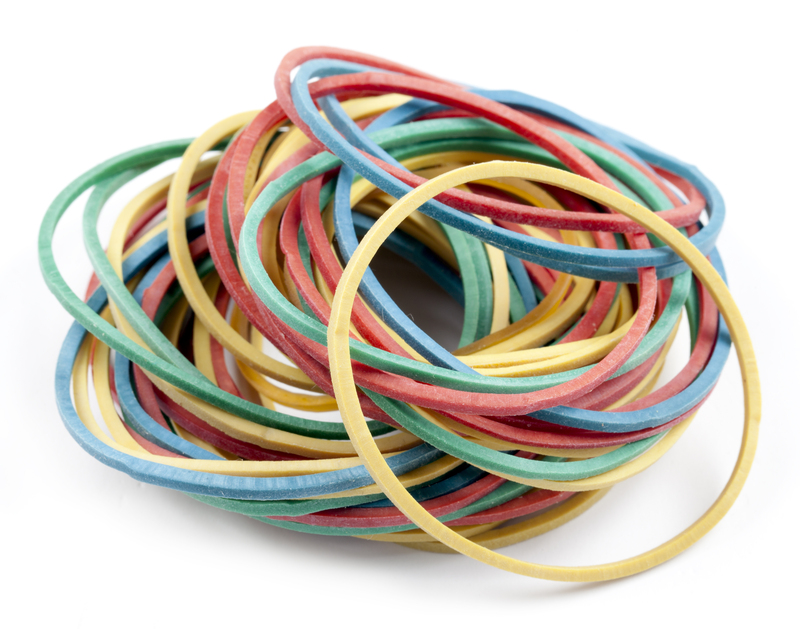How to Keep the Environment Safe When Getting Rid of PPE
The global increase in Personal Protective Equipment (PPE) usage has been vital in combating health crises, protecting workers, and ensuring public safety. However, the improper disposal of PPE poses a significant threat to our planet. Whether you are a business owner, a healthcare provider, or an individual, understanding how to keep the environment safe when disposing of PPE is critical. This comprehensive guide will outline safe, practical, and environmentally friendly ways to get rid of PPE responsibly, ensuring a cleaner, healthier world for everyone.

Understanding PPE and Its Environmental Impact
Personal Protective Equipment includes items such as masks, gloves, face shields, gowns, and shoe covers. These items are primarily single-use and made from synthetic materials, such as polypropylene and plastic polymers. While PPE is essential for safety, the environmental impact of improper PPE disposal is significant:
- Non-biodegradable materials persist in landfills and oceans for decades.
- Wildlife hazard: Animals can ingest or become entangled in discarded PPE.
- Microplastic pollution as PPE breaks down into tiny fragments, contaminating soil and waterways.
- Potential health risk from improperly handled contaminated materials.
Thus, learning the best ways to dispose of PPE sustainably is not just about protecting the environment, but also public health.
Common Types of PPE and Their Components
Being aware of the materials used in different types of PPE helps in choosing the most eco-friendly disposal method:
- Masks: Often made from multiple layers of polypropylene plastic fibers.
- Gloves: Primarily latex, nitrile, or vinyl, each with different disposal considerations.
- Face Shields: Usually comprise a plastic shield (PET) with an elastic or foam headband.
- Gowns & Aprons: Non-woven plastics or treated fabrics.
- Shoe Covers: Disposable nonwoven polypropylene or plastic.
Tip: Always check packaging or consult your PPE supplier for material composition to ensure proper sorting and disposal.
Proper PPE Disposal Methods: Eco-Friendly Strategies
1. Segregate PPE Waste from Regular Trash
Separating used PPE from regular recyclable waste is a crucial first step. Used PPE may be contaminated with pathogens or chemicals, so it poses health risks if mixed with other waste streams.
- Place used PPE in a clearly labelled bin that is lined with a robust garbage bag.
- Do not place PPE directly into recycling bins. Most curbside recycling programs do not accept used masks or gloves.
- If handling PPE waste from a known contaminated environment (e.g., a hospital), observe local biohazard protocols.
2. Reduce PPE Use Whenever Possible
While safety should never be compromised, minimizing unnecessary PPE use can help reduce overall waste. Consider:
- Utilizing PPE only where required by risk assessment.
- Opting for reusable, washable items where allowed (e.g., cloth masks, washable gowns).
- Training staff on correct PPE use to reduce overuse or wastage.
3. Explore PPE Recycling Programs
About 90% of used PPE ends up buried in landfills or as litter. However, some innovative recycling programs have emerged to address this issue:
- TerraCycle and other organizations now offer PPE recycling boxes that accept masks, gloves, and other disposable equipment. These are safely processed and converted into raw materials for new products.
- Check with local authorities or waste management providers to find dedicated PPE recycling centers or collection points in your area.
- For businesses, implement workplace programs by partnering with PPE recycling services.
Note: Not all recycling programs accept all types of PPE, and PPE must never be placed in household recycling bins unless specifically stated.
4. Dispose of Single-Use PPE Correctly
When recycling is not possible, safe landfill disposal is essential. Dispose of PPE in a sealed bag, and if you are disposing of PPE from a medical or contaminated environment:
- Follow local hazardous waste disposal protocols.
- Mark bins appropriately to signal PPE waste for sanitation workers.
- Never flush masks, gloves or wipes down toilets--they can clog wastewater systems and end up in waterways.
5. Use Biodegradable and Compostable PPE Alternatives
A fast-growing trend for those considering the environment is switching to biodegradable or compostable PPE:
- Some companies offer biodegradable face masks, gloves, and gowns made from corn starch, bamboo, or other plant fibers.
- Always verify that these products truly break down in composting conditions and are certified compostable.
- Properly compost used items if allowed by local guidelines and ensure no contamination with hazardous substances.
Tip: Switching your supply chain to sustainable PPE can greatly reduce waste footprint.
The Step-by-Step Guide to Environmentally Friendly PPE Disposal
1. Remove PPE Safely to Avoid Contamination
- Always remove PPE away from your face and body to prevent spread of contaminants.
- Dispose of each item as soon as it is removed to avoid cross-contamination.
- Wash your hands thoroughly after removing and disposing of PPE.
2. Sort PPE for Disposal or Recycling
- Determine which PPE items (if any) are accepted by local recycling or composting programs.
- Separate clean, single-material PPE for recycling, if permitted.
- Place contaminated items in designated waste containers.
3. Package PPE Waste Securely
- Use strong, sealable bags to contain all used PPE.
- Double-bag if waste may have come into contact with infectious material.
- Mark bags clearly - e.g., 'PPE Waste Only' - to aid waste handlers in safe handling.
4. Utilize Collection or Drop-Off Points
- Arrange PPE waste collection with your waste management company if you work in a business or healthcare setting.
- For households, use public PPE disposal bins where available.
- Participate in special PPE recycling events if organized in your locality.
5. Spread Awareness and Train Others
- Educate staff and family members about the importance of responsible PPE waste management.
- Place signs near disposal stations outlining correct procedures.
- Encourage others to choose reusable, sustainable PPE options where possible.
Bulk Disposal of PPE: Responsibilities for Businesses and Healthcare
Large organizations and medical facilities produce vast amounts of PPE waste. Proper management is not only an environmental concern but often a legal requirement under local and national guidelines.
- Develop and enforce a PPE waste management policy for your organization.
- Contract with licensed waste management and specialized PPE recycling providers.
- Track the amount of PPE purchased, used, and disposed to continually improve sustainability.
- Stay up to date with changing regulations and innovations in PPE waste disposal.
Innovative Solutions for PPE Waste Management
As the world faces mounting PPE pollution, technological innovation is offering new solutions:
- Pyrolysis and chemical recycling: Transforming PPE plastic into fuel or reusable materials in controlled facilities.
- Mechanical recycling: Turning clean, single-type plastics (like face shields) into pellets for new plastic products.
- Biodegradable coatings and additives: Enhancing decomposition rate of PPE items.
- Creative upcycling: Artists and innovators using cleaned PPE to create building materials or art, raising awareness of the issue.
Practical Tips for Everyday PPE Users
If you're using PPE in your daily life, consider these easy ways to protect the environment:
- Switch to reusable face masks when possible, and launder them regularly.
- Purchase PPE from brands that offer biodegradable, compostable, or recycled content options.
- Store used single-use PPE in a separate bag until you can dispose of it properly - never litter or leave on the street.
- Follow local guidance about mask and glove disposal--regulations vary by city and region.
- Raise awareness among your friends and community on the environmental effects of PPE waste.
How to Advocate for Better PPE Waste Solutions
Tackling PPE pollution requires not only individual action but community and policy involvement:
- Support and petition for policies that promote sustainable PPE manufacturing and end-of-life management.
- Join or organize clean-up campaigns in your city to remove discarded PPE from public spaces.
- Encourage local governments and schools to install separate PPE waste bins.
- Promote innovation funding for R&D into recyclable and biodegradable PPE technologies.

Frequently Asked Questions about Safe PPE Disposal
Can PPE be recycled in my regular recycling bin?
No. Most household recycling programs do not accept used PPE because of contamination and material complexity. Instead, participate in dedicated PPE recycling schemes.
Is burning PPE a safe disposal method?
Incineration in controlled, professional facilities is sometimes used for contaminated medical PPE. However, burning at home or in open environments is dangerous and releases toxic emissions.
Why don't more PPE products biodegrade?
Most disposable PPE is made from plastics designed for durability, not biodegradability. Demand for change is pushing manufacturers to innovate new, eco-friendly versions.
What can businesses do to minimize PPE waste?
- Procure reusable PPE where permitted.
- Train employees on correct use and disposal.
- Set up on-site recycling/collection for PPE.
- Work with sustainable PPE suppliers.
Conclusion: Protecting the Environment, One PPE at a Time
The rise of PPE has undeniably saved countless lives; however, its improper disposal threatens the environment we all share. By making informed choices--from selecting eco-friendly products, using only what is necessary, properly handling used materials, and advocating for systemic change--you play a critical role in keeping the environment safe when getting rid of PPE.
Let's commit together to a safer, cleaner, and more sustainable future. Every mask, glove, or gown disposed of responsibly brings us a step closer to a healthier planet for generations to come.



